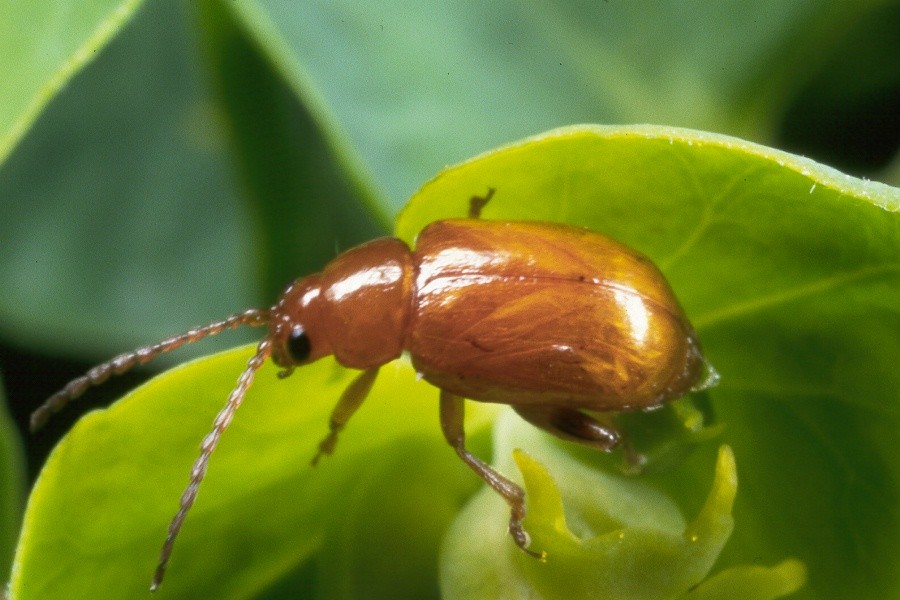Brown dot leafy spurge flea beetle
(Aphthona cyparissiae)

Description
Aphthona cyparissiae is a species of leaf beetle known as the brown dot leafy spurge flea beetle. It is used as an agent of biological pest control against the noxious weed leafy spurge (Euphorbia esula). The adult beetle is light golden brown and about 3 millimeters long. The female lays eggs on or near leafy spurge, its host plant, during the summer months. The white larva emerges in about two weeks and feeds on the roots and root hairs. It is active through the fall and winter until the cold stimulates it to pupate. It burrows into the soil to undergo a three-week pupation. Damage to the plant occurs when the larva eats the roots and the adult feeds on the leaves and flowers. Heavy beetle activity kills the plant. This beetle is a spurge specialist, preferring cypress spurge (Euphorbia cyparissias) in its native range and readily attacking leafy spurge as its first alternate. This beetle is native to Europe. It was first released as a biocontrol agent for leafy spurge in the United States in Fremont County, Wyoming in 1986. It is now established in much of the northern United States from Washington to Rhode Island, though it is now scarce in North Dakota and Minnesota. It is still the dominant Aphthona species at some release sites in Manitoba. Aphthona is a genus of beetle, in the leaf beetle family Chrysomelidae, native to Europe and Asia. More specifically, Aphthona are flea beetles, meaning they have enlarged hind legs for jumping away from potential danger. There are some 300 species known worldwide. This flea beetle genus is important because of the usefulness of some species in controlling leafy spurge, a major invasive weed in parts of western North America. Several Aphthona species have been taken from Europe and introduced into localized areas of the United States and Canada, and some success against the weed is being seen. The six species used for this purpose include A. abdominalis, A. cyparissiae, A. czwalinae, A. flava, A. nigriscutis, and A. lacertosa, though A. abdominalis apparently never established a viable population and was never introduced in Canada. Control is generally thought to be effective, but results vary from site to site, which has been attributed to soilborne pathogens, phenology of spring, soil texture, and leafy spurge density. Control is less effective in sandy soils. Control may not be reliably observed and measured for 10 years or more.
Taxonomic tree:







